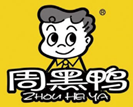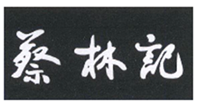As more brands go global, the Madrid International Trademark System appears become the preferred tool for businesses seeking worldwide trademark protection. Compared to filing in each country individually, the Madrid System covers approximately 131 countries and regions, offering a more cost-effective solution for multi-jurisdictional registration. However, a critical and often challenging question remains: which countries to designate. An ill-informed selection can lead to significant risks or unnecessary costs.
Operating without a registered trademark in a foreign market leaves a brand vulnerable. If you find your trademark already hijacked upon market entry, you might face the dilemma of buying it back at a high price or being barred from local e-commerce platforms and sales channels. Even if a legal invalidation is possible, the process consumes considerable time and resources, ultimately disrupting your global brand strategy.
Therefore, your choice of designated countries directly impacts three key areas:
Protection Scope: Which markets will your brand be legally protected in?
Cost Structure: Where will the majority of fees be allocated, and can ineffective spending be avoided?
Legal Risks: Which countries have high refusal rates, and do they require additional documentation?
When selecting designated countries, we recommend a strategic approach based on the following three perspectives:
01 | Must-Have Countries: Current & Planned Markets
Any market where your business already operates or plans to enter within the next 1–2 years falls into this "must-have" category. Secure your trademark there in advance. Failure to do so can hinder store launches, restrict advertising campaigns, and block potential distribution partnerships.
02 | High-Risk Countries: Proactive Safeguarding
Even without immediate market entry plans, you cannot afford to ignore countries with prevalent trademark hijacking. Generally overseas squatters often target promising brands that are expanding rapidly but have not yet secured international trademark registration. In fact, renowned Chinese brands like "Wei Long," "Zhou Hei Ya," "Tong Ren Tang," "Huang He Lou," and "Cai Lin Ji" have all faced trademark hijacking overseas.

[FR] Hijacked Trademark No.: 5064159 | 
Registered trademark of Zhou Hei Ya Food Co., Ltd. |

[TH] Hijacked Trademark Nos.: 200144247, 200144248 | 
Registered trademark of Wuhan Cai Lin Ji Commerce and Trade Co., Ltd. |
Currently, most trademark hijacking incidents are concentrated in:
Southeast Asia: Indonesia, Thailand, Vietnam, Malaysia
Middle East: Saudi Arabia, United Arab Emirates
The Americas: Mexico, Brazil, Chile
Europe: France, Germany, Italy, Spain
This phenomenon is driven not only by professional squatters but also by legal frameworks in some jurisdictions that grant rights to the first applicant without rigorous examination for similarity, creating high risks for preemptive registration.
03 | Industry-Strategic Countries
International market dynamics vary significantly across industries. For instance, manufacturing brands may prioritize industrial powerhouses like Germany, Japan, and the United States, while F&B, FMCG, and lifestyle brands might focus more on the EU and Asian markets. Companies in specialized sectors should select countries based on their specific industry landscape and target audiences.
Phased Implementation for Budget Management
Businesses with budget constraints do not need to designate all countries at once. A phased approach is highly recommended:
Phase 1: Secure core markets (e.g., US, EU, Japan).
Phase 2: Cover high-risk countries as a protective "insurance" measure.
Phase 3: Expand into potential future markets (e.g., Middle East, South America, Africa).
This strategy ensures protection in critical jurisdictions without requiring a substantial upfront investment.
Navigating Examination Variances
When selecting countries, it is crucial to understand differences in examination systems, as these directly impact registration success rates and enforcement efficiency.
United States: The USPTO conducts strict examinations with relatively high costs. It mandates concrete proof of use, requiring periodic submissions of specimens; failure to comply can result in cancellation.
Japan: The system demands extreme precision in goods/services descriptions and avoids generic terms in the mark itself, as such applications are highly susceptible to refusal.
Vietnam: Be prepared for potentially prolonged procedures; office action responses can sometimes extend over several years, leaving applicants without definitive legal protection during this period.
A deep understanding of these national differences helps companies strategically plan their filing sequence and budget, anticipate potential obstacles, and mitigate risks. The optimal strategy involves prioritizing core markets, preparing necessary documents and responses in advance for high-risk countries, and tailoring your application approach to each jurisdiction's legal nuances. This ensures a more robust global trademark portfolio while minimizing registration and enforcement risks.
Conclusion
Selecting designated countries under the Madrid System is far more than a simple matter of checking boxes. It requires a strategic decision-making process that integrates your business roadmap, industry specifics, and risk assessment. Remember these two fundamental principles: first, prioritize protection in your current and planned markets; and second, secure your mark early in high-risk hijacking jurisdictions. By adhering to these principles, the Madrid System can truly empower your business to achieve high-value global trademark protection in a cost-efficient manner.
Disclaimer: This article is for informational purposes only and does not constitute legal advice. Given the complexities and variations in national trademark laws, we strongly recommend consulting with qualified legal professionals for advice tailored to your specific circumstances.
